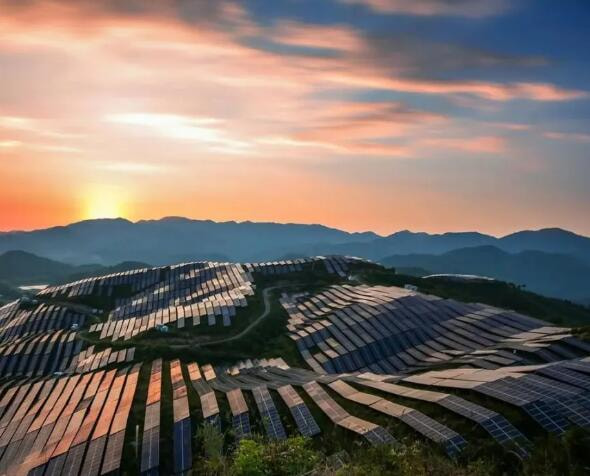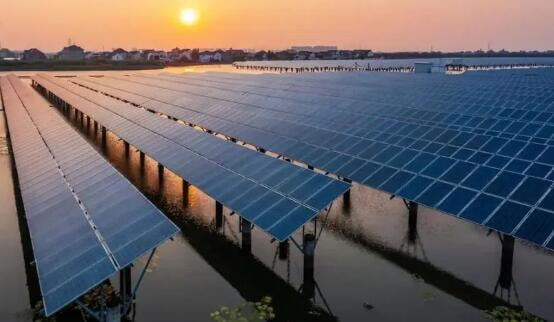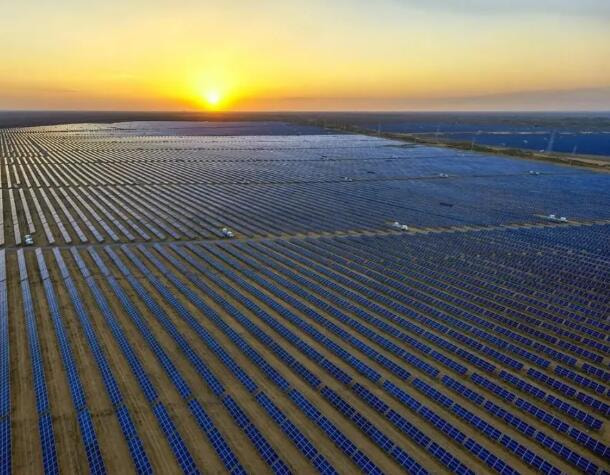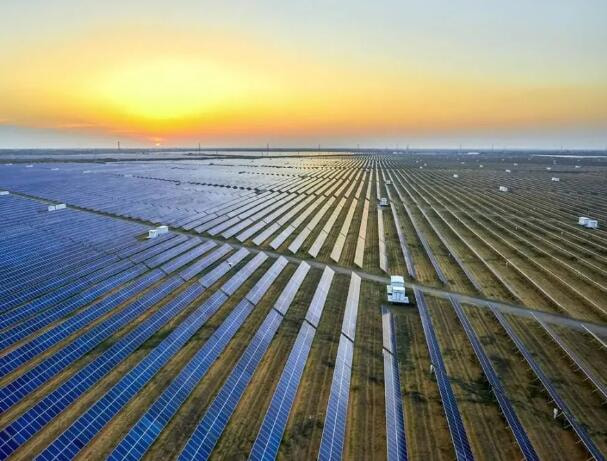20 Questions About Photovoltaic Power Generation, All the Questions You Want to Ask!
1. What is photovoltaic power generation?
Answer: Photovoltaic power generation is a technology that uses solar energy to convert light energy into electrical energy. Solar panels are installed to convert solar energy into direct current, and then the direct current is converted into alternating current through an inverter to supply household or industrial electricity.

2. What is a distributed photovoltaic power station?
Answer: It refers to a cluster composed of multiple independent small photovoltaic power stations, usually located on rooftops, facades, parking lots, industrial areas and other places in cities or rural areas. These small photovoltaic power stations are connected through the grid and can inject power into the grid when the grid load needs it. Compared with traditional centralized photovoltaic power stations, distributed photovoltaic power stations have the advantages of flexible investment, short construction period, flexible layout, high power generation efficiency, and promotion of grid security and stability. At the same time, distributed photovoltaic power stations can also provide local residents with convenient electricity services, reducing energy shortages and pressure on the power grid.
3. What is a centralized photovoltaic power station?
Answer: It refers to installing a large number of photovoltaic panels in a central area, concentrating the power into a centralized inverter for conversion, and transmitting it to the power grid through transmission lines. Centralized photovoltaic power plants are generally large in scale, reaching hundreds of megawatts. Since they are concentrated in one area, they are easy to manage and maintain. In addition, the positions of the panels of centralized photovoltaic power stations are relatively fixed, making it easy to clean, maintain and replace photovoltaic panels. Due to its large scale, it requires a large amount of land, capital and energy for construction and operation, and has large power transmission losses, but its power generation efficiency and economy are relatively high.
4. What types of photovoltaic panels are there?
Answer: Types of photovoltaic panels include: monocrystalline silicon solar panels, polycrystalline silicon solar panels, amorphous silicon solar panels, thin film solar panels, etc.

5. What parts does the photovoltaic power generation system include?
Answer: The photovoltaic power generation system includes solar panels, brackets, inverters, grid connectors, meters, DC circuit breakers, etc.
6. What is an inverter for photovoltaic power generation?
Answer: An inverter is a device that converts DC power generated by solar panels into AC power. It is used to connect the power generated by photovoltaic power generation systems to the grid or directly supply power.
7. What are the classifications of photovoltaic power plants?
Answer: The classification of photovoltaic power stations includes: distributed photovoltaic power stations and centralized photovoltaic power stations.
8. How to determine the installation direction and angle of photovoltaic power station?
Answer: The installation direction and angle of the photovoltaic power station should be comprehensively considered based on the location's latitude, season, solar altitude angle and other factors to maximize the use of solar energy.
9. What issues need to be paid attention to in the maintenance of photovoltaic power stations?
Answer: In the maintenance of photovoltaic power stations, attention should be paid to cleaning solar panels, checking the status of cables, inverters, meters and other equipment, and timely discovering and troubleshooting problems.
10. What are the common grid connection methods for photovoltaic power plants?
Common photovoltaic power station grid connection methods mainly include: direct grid connection, inverter grid connection, centralized grid connection and microgrid connection. Among them, direct grid connection refers to connecting the DC output end of the photovoltaic power station to the AC distribution network, and directly integrating the electric energy into the grid after being processed by transformers and switching equipment. Inverter grid connection refers to connecting the DC output end of the photovoltaic power station to the inverter. The inverter converts the DC power into AC power and integrates it into the power grid. Centralized grid connection refers to concentrating multiple photovoltaic power stations at one point, converting the electric energy into alternating current through a centralized inverter, and integrating it into the power grid. Microgrid connection refers to composing a photovoltaic power station and other energy equipment (such as wind turbines, energy storage equipment, etc.) into a microgrid, which is managed by a microgrid controller to achieve grid connection and off-grid operations in different modes.

11. What are the disadvantages of photovoltaic power plants?
Although photovoltaic power plants have many advantages, they also have some disadvantages:
Requires large area of land: In order to achieve high power generation capacity, photovoltaic power stations require large areas of land to install solar panels. This means that the construction of photovoltaic power plants will occupy a large amount of land resources, especially in urban areas where land resources are scarce, which may lead to land competition and development.
Affected by weather: The ability of solar panels to generate electricity depends on the intensity of light. On cloudy days or at night, the power generation capacity of photovoltaic power stations will be affected. Although batteries can be used to store electrical energy, this increases system cost.
High initial construction costs: The initial construction costs of photovoltaic power plants are relatively high compared to traditional fossil fuel power plants, mainly due to the high cost of solar panels and other components. However, with the continuous advancement of technology and the expansion of scale, the construction cost of photovoltaic power stations is gradually decreasing.
Battery components have limited lifespan: Photovoltaic panels and other components degrade with use, and their ability to generate electricity diminishes over time. While these components have a long life, they also require regular replacement and maintenance, which increases operating costs.
Requires a large amount of late-night peak shaving capacity: The power generation capacity of photovoltaic power stations is limited by light intensity, so a large amount of late-night peak shaving capacity is required to balance the difference in energy supply and demand. This may require the use of additional energy storage systems or backup generation equipment, adding to the cost and complexity of the system.
Environmental impact: Although the environmental impact of photovoltaic power plants is relatively small, the construction and operation of photovoltaic power plants may still cause a certain degree of interference and impact on local ecosystems and wildlife. In addition, the production and disposal of battery components may also cause some environmental pollution problems.
12. How is the power generation efficiency of a photovoltaic power station measured?
The power generation efficiency of a photovoltaic power station mainly refers to the photoelectric conversion efficiency, that is, the efficiency of converting solar energy into electrical energy. Photoelectric conversion efficiency is measured by testing the ratio between the output power of a solar cell module and the intensity of solar radiation. The photoelectric conversion efficiency of currently commercialized solar cell modules is between 18% and 22%. Different solar cell materials and processes will affect the photoelectric conversion efficiency.
13. What issues need to be paid attention to in the operation and maintenance of photovoltaic power plants?
The operation and maintenance of photovoltaic power stations need to pay attention to the following aspects: first, keep the equipment clean, perform regular cleaning and dust removal to ensure the power generation efficiency of photovoltaic modules; second, conduct equipment inspections, and regularly check cables, connectors, inverters, The operating status and wiring conditions of transformers and other equipment; in addition, regular maintenance and repair of equipment is required, such as replacing cables, batteries, inverters and other equipment components.
14. What safety issues need to be paid attention to in photovoltaic power plants?
Photovoltaic power stations need to pay attention to the following safety issues: First, to prevent electric shock accidents, cables, wiring, switches and other equipment have strict requirements and must comply with national safety standards; second, to prevent fire accidents, the components and bracket materials of photovoltaic power stations must be flame retardant performance, and regularly remove weeds and other flammable materials; in addition, attention should be paid to lightning protection,

15. What is the lifespan of the battery components of a photovoltaic power station?
The life of photovoltaic modules is usually about 25 years. However, this does not mean that photovoltaic power plants can no longer be used after 25 years. In actual operation, the performance of battery components will gradually decline over time, but even after 25 years, its output power can still remain above 80%. In addition, other components in the photovoltaic power station, such as inverters, cables, etc., also require regular maintenance and replacement.
16. Can photovoltaic power stations generate electricity at night?
Since there is no sunlight at night, photovoltaic power stations cannot generate electricity at night. However, some photovoltaic power plants may be equipped with energy storage systems to use stored energy to continue supplying power at night or during cloudy weather.
17. What impact do photovoltaic power stations have on the environment?
Photovoltaic power plants have relatively little impact on the environment. Compared with fossil fuel power plants, photovoltaic power plants do not produce harmful gases such as carbon dioxide and sulfide, nor pollutants such as sewage. In addition, photovoltaic power plants can be constructed without occupying a large amount of land, so they have less impact on land resources.
18. What facilities can photovoltaic power stations be used to power?
Photovoltaic power plants can provide power to a variety of facilities, including homes, commercial buildings, factories, schools, and more. In addition, some large-scale photovoltaic power stations can also provide power for cities, regions and even national power grids.
19. What are the advantages of photovoltaic power stations?
The advantages of photovoltaic power plants include:
Renewable: Solar energy is a renewable energy source. Photovoltaic power stations use solar energy to generate electricity and do not consume non-renewable resources.
Environmental protection: Photovoltaic power plants do not produce pollutants and have less impact on the environment than fossil fuel power plants.
Long life: Photovoltaic modules generally have a long life and can continue to generate electricity for 25 years or more.
Distributed: Photovoltaic power stations can be built in a distributed manner to better meet dispersed energy needs.
Reducing energy costs: With the development of technology and the decline of costs, the construction and operation costs of photovoltaic power stations have gradually reduced, and they have gradually become an economically viable alternative energy source.
20. How to improve the power generation efficiency of a photovoltaic power station?
Clean the photovoltaic panel surface regularly to ensure its surface is clean and reduce the impact of dirt on the photovoltaic panel.
Optimize the layout of photovoltaic modules to maximize the use of available sunlight.
Install sunshade structures to control light intensity to prevent excessive light intensity from causing damage to battery components.
Use high-efficiency inverters and battery modules to increase the overall efficiency of your photovoltaic power plant.
Use a controller capable of optimal power point tracking to ensure that battery components are always at their optimal operating point.
Optimize plant design to ensure maximum utilization of available solar energy, for example using dual-axis solar trackers or tilting racks.
Install temperature sensors to monitor the temperature of battery components and take timely measures to prevent excessive temperatures from reducing efficiency.
Install lightning arresters to protect power stations from weather hazards such as lightning strikes.
Regular maintenance and inspections of photovoltaic power plants are carried out to ensure that all equipment is operating properly and that potential problems are discovered and repaired in a timely manner.
The power generation efficiency of photovoltaic power stations is regularly evaluated and optimized and improved based on the evaluation results.



